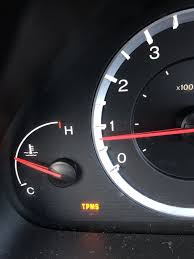Does the Color of Coolant Matter?

Yes, the color of coolant does matter, but not necessarily for its performance. The color of the coolant is primarily a way for manufacturers to differentiate between types of coolants and the specific chemicals they contain. While coolant color doesn’t directly affect its effectiveness, it’s important to use the correct type for your vehicle to ensure optimal engine cooling and prevent damage.
Types of Coolant Based on Color
- Green Coolant:
Green coolant, often referred to as inorganic acid technology (IAT) coolant, is one of the oldest formulations. It’s commonly used in older vehicles and contains silicates and phosphates for corrosion protection. Green coolant typically needs to be replaced more frequently, usually every 2 years or 30,000 miles. - Orange Coolant:
Orange coolant is typically an organic acid technology (OAT) coolant. It doesn’t contain silicates, making it better suited for newer vehicles, especially those with aluminum engines. OAT coolant lasts longer than IAT coolant, usually around 5 years or 150,000 miles before needing replacement. - Red Coolant:
Similar to orange coolant, red coolant is also based on OAT technology but may contain different inhibitors for corrosion protection. It’s designed for modern vehicles and often has a longer service life, typically up to 5 years or 150,000 miles. - Pink Coolant:
Pink coolant is another variation of OAT coolant, sometimes used in specific manufacturers’ vehicles, such as those from Toyota. It offers excellent protection for modern engines and typically has a long service life. - Blue Coolant:
Blue coolant is used by some manufacturers, such as BMW and some European brands. Like other OAT-based coolants, it helps prevent corrosion and scale buildup in the engine, with a longer lifespan than older types.
Does the Color of Coolant Affect Its Performance?
No, the color itself doesn’t impact the performance of the coolant. The important factor is the type of coolant and the specific additives used to prevent corrosion, scale buildup, and engine overheating. Always refer to your vehicle’s owner manual to determine the recommended type and brand of coolant for your engine.
What Happens if You Mix Different Colors of Coolant?
It’s generally not recommended to mix different types or colors of coolant, as doing so can lead to:
- Chemical reactions: The additives in different coolants may not be compatible, leading to reduced protection and performance.
- Clogging: Mixing coolant types can cause the formation of sludge or gel-like substances, which could clog your radiator or cooling system.
- Decreased effectiveness: The mixture may reduce the coolant’s ability to protect against overheating or corrosion, potentially causing engine damage.
If you need to top off your coolant, it’s best to use the same type and brand as the existing coolant.
Conclusion
While the color of coolant is not an indicator of its quality or effectiveness, it’s essential to use the right type of coolant for your vehicle. The performance and longevity of your engine cooling system depend on using the proper coolant formulation. Always refer to your owner’s manual for the recommended coolant type and avoid mixing different types of coolant to prevent any issues.
Also Check:
• Does the Color of Antifreeze Matter?
• Does Peek Green Radiator Fluid Meet FL-22 Specs for Toyota?





